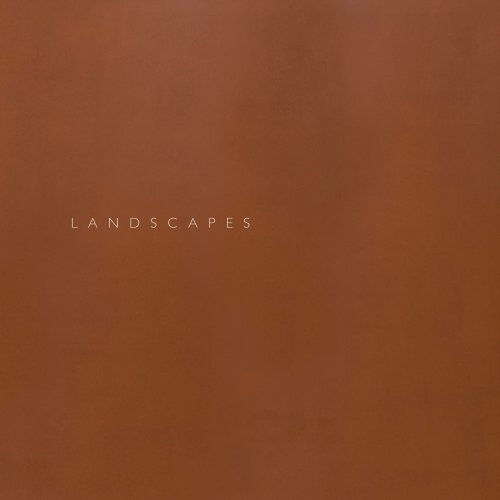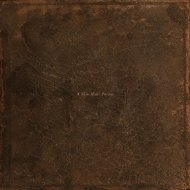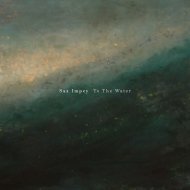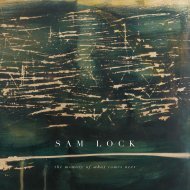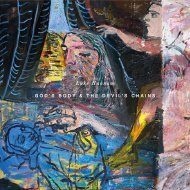Onya McCausland 'Landscapes' - Online Exhibition Catalogue
Catalogue for the exhibition 'Landscapes' by Onya McCausland at Anima-Mundi, St Ives
Catalogue for the exhibition 'Landscapes' by Onya McCausland at Anima-Mundi, St Ives
Create successful ePaper yourself
Turn your PDF publications into a flip-book with our unique Google optimized e-Paper software.
L A N D S C A P E S<br />
A N D S C<br />
A P E S
ONYA MCCAUSLAND<br />
MCCAUSLAND
1
LANDSCAPES<br />
(From Coal Mine Waste to Landscape Painting)<br />
These landscapes / paintings are made using<br />
ochre or iron oxide pigments that form as waste<br />
during the treatment of mine water in coal mining<br />
regions across the UK. Their names: Cuthill in West<br />
Lothian, Scotland; Deerplay Hill in Bacup, Lancashire;<br />
Saltburn in East Yorkshire and Tan-y-Garn in South<br />
Wales,, acknowledge the origins and complexities<br />
of the ochres’ formation, and link the great coal<br />
mining regions of the UK’s industrial past with the<br />
formation of contemporary colour. The individual<br />
colours of the landscapes are determined by the<br />
unique conditions of their geological context by<br />
responding and behaving in different ways to<br />
processes in the studio. Each material dictates its<br />
own idiosyncratic form of representation - individual<br />
paintings recall their landscape origins, embodying a<br />
memory of place. Individual works involve, evolve<br />
and invoke the physicality of material process more<br />
explicitly. The personality of the material is revealed<br />
through its formation: these paintings follow the<br />
materials’ urge, its sensuality, implicating natural<br />
forces of fluidity, skin, surface and viscera.<br />
The landscape sites and paintings are not only about<br />
the discovery and utility of a new colour material, the<br />
paintings here also deal with different formal concerns<br />
around ways of seeing within the concept /“confines”<br />
of landscape painting; they propose alternative ways of<br />
perceiving and conceiving landscape and its uses, by<br />
voicing the materiality of place in ways that overlap, or<br />
conflate geological and human time frames.Traditional<br />
devises, or ‘tropes’ of landscape painting are exploited,<br />
pointing to and describing surface and depth. These<br />
perspectival orientations and formal organisations of<br />
surface historically have been used as a means of<br />
placing/displacing, separaing/folding, of suggesting<br />
proximity and distance.<br />
The space and spacial relationships in particular works<br />
define and undermine stable placement or positioning<br />
2
of where we are. Some works like Deerplay Hill,<br />
describe the surface as a topography - from the Greek<br />
topographia, from topos ‘place’ and graphia; to write.<br />
A landscape, of moorland, mountain and bog, seen and<br />
experienced from the ground (both the “ground” of the<br />
painting and the earth) is also one seen close up. The<br />
surface of a painting is not only optical but tactile,<br />
sensual, physical, animal like, material.<br />
The physicality of the paintings run parallel and equal<br />
to their opticality. The depth, opacity, transparency of<br />
individual colours are reflected in the landscapes they<br />
belong to : Saltburn ochre is derived from mines in<br />
the North East coast just south of Middlesborough<br />
where the sharp bright light, refracted off the<br />
North sea has a flattening effect on the surrounding<br />
landscape. The Deep mines, run under the sea creating an<br />
oppositional pull between surface and depth, cerebral<br />
and psyche, light ness and dark. This is accentuated by the<br />
methods of seeing the sites from Google earth and as the<br />
paintings are inextricably linked to the mine water<br />
treatment sites where the colours are forming - the sites<br />
(photographed from Google Earth) are also conceived of<br />
as landscape paintings.<br />
Cuthill works concern themselves also with the<br />
process of material formations with the hand/ without<br />
the hand - material as it forms in the landscape and in the<br />
studio : matter subjected to the action of its own<br />
physical properties where the optical develops with the<br />
material in the making - material follows physical laws -<br />
gravity, motion, viscosity, pressure and temperature - the<br />
same physical laws that cause sand dunes, land slides,<br />
sediments and mountains to form. The colour Tan-y-Garn<br />
is heavy and blood-like - haema or haima, as in haematite,<br />
which means blood, as if it comes from an ancient place<br />
resonant with the human body, fluidly, water flow,<br />
viscosity and sensuality“ the mud, the blood and the<br />
beer” echoing the landscape. There is resemblance - in<br />
the medieval sense that like things are reflected in<br />
each other.<br />
These paintings here are just a stage in processes<br />
of material transformation or a meeting point of<br />
converging processes - from mine water minerals<br />
oxidising and participating in the formation of landscape,<br />
to becoming ochre and in turn to becoming landscapes<br />
hanging on the walls of the gallery: They can be seen as<br />
a redefinition of sorts of landscape painting... exploring<br />
an examination of materials from different perspectives,<br />
view points and across various scales.<br />
The material is a starting point for the paintings, the<br />
paintings a temporary representational interpretation<br />
culminating in the synthesis of geological formation<br />
and human intervention. The works - the paintings and<br />
the sites - can be seen as a performance of change<br />
where the connections between physical processes and<br />
human actions cannot be separated. These landscapes<br />
made from this distinct material are part of the lineage<br />
of human activities and cultural practices that stretch<br />
back to the beginning of human history. Cave painting,<br />
ancient burials, mining, waste and landscape painting. And<br />
colour, the process of making ochre that the mine water<br />
treatment sites perform is historically unique, and<br />
the material that the sites harnesses is an important<br />
cultural signifier.<br />
Each landscape site produces a different coloured ochre<br />
that is mineralogically unique to that place, to that mine,<br />
to that geography: the colour and the painting converge,<br />
they signify and embody Place - identity, belonging,<br />
history, community, the economy and the contemporary<br />
economics of waste.<br />
<strong>Onya</strong> <strong>McCausland</strong>, 2018<br />
3
VISIONS OF EXCESS<br />
Type the coordinates 54°34 07.37 N 0°57 42.87 into<br />
google earth and you will dive down into a pool of red:<br />
‘Saltburn Mine Water Treatment scheme’. I say dive into,<br />
however this virtual free fall halts just before you reach<br />
ground level; a jittering curser hovering directly above.<br />
From this aerial perspective the landscape is levelled<br />
out. Conventional sight lines are rearranged, with the<br />
horizons lumps airbrushed and flattened. Saltburn’s Mine<br />
Water Treatment pools lose their rippling variation and<br />
the distinct areas of colour are isolated, as if neatly fitting<br />
into a hardware store wall paint colour chart. A hardware<br />
aesthetic created by a piece of computer software. It is as<br />
Italo Calvino said; ‘software cannot exercise its powers of<br />
lightness except through the weight of hardware. But it is<br />
the software that gives the orders […] The iron machines<br />
still exist, but they obey the orders of weightless bits’.<br />
These google map screenshots expose their digital<br />
creator; the treatment sites in their rigid geometry<br />
have the inhuman appearance of computer integrated<br />
circuit chips.<br />
Perhaps the treatment site itself is still something<br />
of Calvino’s ‘iron machine’, obeying the demands of<br />
almost weightless particles (a mineralisation process<br />
unlocks pyrite which is then oxidised into the insoluble<br />
ferric form and precipitates particles of ochre<br />
pigment). This dynamic eco system is not evident from<br />
the static monochrome found on google earth. Whilst the<br />
dizzying descent into coordinates gives the impression<br />
of rattling through the macro to access the micro it is<br />
ultimately disappointing. We remain so far away,<br />
suspended in this unnatural aerial vacuum there are no<br />
faithful timekeepers; not the drum beat in my chest,<br />
nor the lilt and sway of breath, no august chorus<br />
of insect chatter clicking in the clammy night. These<br />
natural rhythms are autotuned to obey the same<br />
frequency, so we access digitals images without presence.<br />
We see monochromes without organs.<br />
The map is not the territory, nor is it a simple ‘birds eye<br />
view’. With new features like ‘angled’ and ‘street’ views<br />
multiple perspectives are amalgamated to produce a<br />
multifocal image. Where are we experiencing this from?<br />
Where is our place in this landscape? The nature of our<br />
human experience is our inability to master all fields<br />
of vision. Phenomenology, the study of consciousness<br />
experienced from the first-person point of view,<br />
understands totalising accounts to be impossible. Our<br />
perception is constrained by what is in front or behind,<br />
above or below, only rectified by physically changing<br />
position. Maurice Merleau-Ponty argued that ‘experience<br />
is [...] lived by me from a certain point of view; I am not<br />
the spectator, I am involved’.<br />
<strong>McCausland</strong> does not halt at surface, rather she plunges<br />
into the depths of terrain entering into a dialogue with<br />
that which the earth provides.<br />
The titles of her works reflect this engagement that<br />
occurs both above and beneath ground. ‘Cuthill’<br />
references the depth of the mine, using the<br />
vertical reference system: Ordinance Datum Newlyn -<br />
which establishes a reliable bench mark measurement<br />
system underground whilst The Google Earth images by<br />
contrast are titled according to the distance from above<br />
the ground. Passing through the earth’s membrane she<br />
facilitates an interplay between above and beneath,<br />
light and shade. Not only does <strong>McCausland</strong>’s practice<br />
re-orientate the physical axis of our engagement with<br />
landscape. She scrutinises our conceptual axis with<br />
regard to how we approach and understand ‘waste’.<br />
<strong>McCausland</strong>’s colour is the waste product of a<br />
decanting process. ‘Waste’ is often considered<br />
contaminated or hybridised and, if no adequate<br />
nutrient retrieval systems exist, then its use value is<br />
voided. In 2014, between 4 and 5 thousand tons of<br />
ochre were being sent to landfill every year because an<br />
economically viable use could not be found and<br />
landfill was the cheapest option. By reusing this<br />
otherwise redundant material in her work <strong>McCausland</strong><br />
has demonstrated the uniqueness and cultural value of<br />
these colours and their landscape contexts. Her practice<br />
re-energises the discarded matter bestowing it with new<br />
life-force as artists’ pigment. There is no useless matter. if<br />
something seems useless, we should not discard the thing<br />
4
itself but reassess the frame in which we have trapped it.<br />
These muddy pools are rather fonts abundant with blood<br />
red pigment.<br />
<strong>McCausland</strong>’s recognition of the potential of the<br />
overlooked is embodied by Baudelaire’s rag picker who<br />
‘in the muddy maze of some old neighbourhood, Often,<br />
where the street lamp gleams like blood’ catalogues and<br />
collates the annals of intemperance. In this figure the<br />
locating and repurposing of foraged scraps becomes<br />
an extended metaphor for the poetic method. Both<br />
ragman and poet are concerned with the disregarded<br />
and refused. The ragman found an accomplice in the<br />
Avant Garde artist of the 20th century. From Dada<br />
Collages to Rauschenberg’s accumulation, artists used the<br />
flatbed picture plane as an adhesive surface upon which<br />
all manner of residue could gather. The act of retrieval<br />
and assemblage, rather than composition of painting<br />
proper, results in an openness, a negation of ego in favour<br />
of object agency. These practices did not turn their back<br />
on the world but were occupied by it. When Picasso<br />
made his collages, he said he wanted the real offal of<br />
human life, the dirty, poor and despised. These moves<br />
motivated by the desire to muddy the sheen of the<br />
commodity and circumvent the economy of the art<br />
market reached parodic status when Piero Manzoni<br />
canned his own shit and sold on par with the value<br />
of gold. This act epitomises Freud’s belief that<br />
artworks always have an overdetermined relationship to<br />
faeces. But so do all systems, be them bodily, aesthetic,<br />
economic. Everything participates in the impulsive and<br />
uncontrollable drives of ingestion and excretion. I note<br />
we began this essay soaring above, trapped in a slick<br />
sealed computer programme, we have now plunged into<br />
the base, where all is soiled and pigment is belched out<br />
of the belly of the earth.<br />
<strong>McCausland</strong>’s recognition of the interrelation between<br />
waste matter and art matter follows in the footsteps<br />
of Baudelaire’s’ ragman and Manzoni’s Freudian jester<br />
persona. But it also follows the economic theories of<br />
Bataille for whom the output of one system served as<br />
input for another system. Whilst the treatment sites<br />
attempt to control and contain the ‘waste’ material,<br />
its life does not end there. it is as Bataille said; ‘rather<br />
than the excretion of the foreign body removing the<br />
foreign body it actually liberates it, and liberates it to a<br />
heterogeneity that is out of control’. Sensitivity to<br />
matter’s vibrant potential facilitates transference from<br />
one perspective to another. The waste is energised<br />
as the fuel for a business endeavour; as commercially<br />
available pigment. The landscape is ecologically and<br />
economically fertile; producing ochre, generating an<br />
income for the local econmy and creating high-quality<br />
pigment for artists. Nietzsche commented; ‘the world<br />
exists - it is not something that becomes, not something<br />
that passes away, or rather, it becomes, it passes away,<br />
but it has never begun to become and never ceases from<br />
passing away – it maintains itself in both – it lives on itself;<br />
its excrements are its food’.<br />
The artists’ picture plane is emblematic of the porosity<br />
between ingestion and excretion. When applying the<br />
pigment <strong>McCausland</strong> notes how when the second wet c<br />
oat met with the first dry coat it was immediately sucked<br />
into the dry ochre, like parched soil that gulps down fresh<br />
water. Colour consumes colour, allowing it to become<br />
healthy and ‘full bodied’ in tone. Colour also absorbs<br />
light and alters accordingly; expanding and contracting its<br />
mass, weight and volume.<br />
Each pigment has distinct behavioural properties just<br />
as each mine site has its own method of water<br />
treatment, its own lexicon, creating an entirely unique<br />
ochre pigment. ‘Tan-y-garn’ site uses limestone and<br />
mushroom compost to reduce the acidity of the water<br />
and make a full bodied reddish brown. At ‘Saltburn’,<br />
the water from an iron stone mine becomes a light<br />
yellow ochre. Even within one pigment there are multiple<br />
potentialities, it can be a milky tangerine when raw and a<br />
dense syrupy russet when cooked. The capacity to receive<br />
and repel colour and light alters depending on whether the<br />
pigment is wet or dry, raw or cooked. <strong>Onya</strong> has titled some<br />
works with reference to the cooking process; ‘Iron oxide<br />
pigment from Cuthill Mine Water Treatment Scheme<br />
(2016) burnt at 600° mixed in oil on gessoed canvas’.<br />
5
This is a quantitative title that entails qualitative<br />
engagements with surface and ground.<br />
The passage from raw to cooked is found in most mythic<br />
narratives and is commonly emblematic of the passage<br />
from death to life. At the Palaeolithic Terra Amata<br />
site in Nice, archaeologists retrieved 75 ochre pieces /<br />
ranging in shades from yellow to red and red-brown,<br />
with many intermediate and irregular ones attributable<br />
to different thermal influences. It is understood that the<br />
transformation of yellow stone into red was interpreted<br />
by the Early Acheulian hunter-gatherers as a magic, life<br />
affirming process. Through the addition of heat a sickly<br />
yellow stone could be revived and made bulbous with<br />
red blood. Ochre is used in the mortuary rituals of<br />
many Mousterian sites, Palaeo-Indians and Late Archaic<br />
populations in North America where red pigment would<br />
be smothered on the flesh of the dead or placed in bowls<br />
beside the body. These practices recall the Maori legend<br />
of a woman who, in the nether world, came upon a bowl<br />
of ochre, she ingested the colour and was returned to<br />
life. These burial practices coat the skin with pigment<br />
enabling the pores to ‘ingest’ the substance with hope<br />
that the body is sustained beyond the grave. <strong>McCausland</strong><br />
feeds surfaces with ochre, and as the canvas consumes<br />
the colour it gains more agency. This is nowhere more<br />
apparent than in ‘Cuthill watercolour (drop)’.<br />
Experimenting with how the pigment responds to<br />
contact with different surfaces <strong>McCausland</strong> placed paper<br />
in a horizontal water tank and poured the pigment on<br />
top. Left overnight in the dark, the ochre blindly feels its<br />
way toward the bottom of the container and joins with<br />
the paper. Interestingly its fall forms softly curving hills of<br />
dusty red; recalling the shape of the land from which it<br />
was born (we are forever on our way home)<br />
The ochre forms on paper also recall the derelict heaps<br />
of red shale known as John Latham’s ‘bings’. In 1975,<br />
the Scottish Development agency contacted artist John<br />
Latham for an urban renewal project. Concerned that<br />
these heaps of burnt and oxidised oil shale constituted an<br />
‘eyesore’ in the landscape what was really required was a<br />
new outlook. Let us recall; If something seems useless we<br />
should not discard the thing itself but reassess the frame<br />
in which we have trapped it. Latham re-conceptualised<br />
the mounds of waste as ‘process sculptures’. They were<br />
named as landmarks and with that given a new identity<br />
and impetus. In Room 2, <strong>McCausland</strong> provides a map<br />
that shows the seams of coal mines, and four shards of<br />
shale from one of Latham’s bings, weigh down the map’s<br />
four corners.<br />
Following Latham’s approach, <strong>McCausland</strong> is<br />
campaigning for the mine water treatment sites<br />
themselves be renamed as monuments. This move to<br />
name the sites does not untether the perspective I<br />
have been weaving (for this perspective is something<br />
of an ever cycling mobeius loop). I have so far stressed<br />
how <strong>McCausland</strong> relinquishes the role of artist as<br />
someone who controls and contains colour to adopt<br />
the role of gleaner who liberates the voice of the<br />
discarded. Consequently, the idea ‘trademarking’ may<br />
seem the antithesis of a sensitive approach. Sticking<br />
words to things always entails some form of capture. but<br />
<strong>McCausland</strong>’s naming follows the sympathetic leanings of<br />
Walt Whitman who was so attuned to the murmurings<br />
of matter that his poetry is a seismograph of its song. His<br />
elemental words, as he defined them, do not overwrite<br />
but ‘accord’ with the earth, and ‘are in the air, they are<br />
in you’. Pregnant with multiple temporalities, words are<br />
not static in definition and fixed to the page but are<br />
‘lispings of the future’. Again returning to the notion<br />
of the passage from raw to cooked, Whitman’s song of<br />
the rolling earth proclaims ‘amelioration is the blood<br />
that runs through the body of the universe’. As in Early<br />
Acheulian ritual where burnt ochre was saturated with<br />
this vital red life force, Whitman’s poetic form warms<br />
words until they throb with energy. Words, like the<br />
earth, possess something underneath, that something is<br />
meaning and that something is colour. <strong>McCausland</strong><br />
taps into Whitman’s seismograph. Rather than<br />
hybridising and contaminating the colour with metaphor<br />
she amplifies what has been silenced. Naming the colour<br />
as it obdurately exists in its environment. Mary Douglas<br />
6
wrote how dirt is not dangerous so long as it without a<br />
name. In naming the pigment after the site <strong>McCausland</strong><br />
unleashes its vibrant agency. Much like the methods of<br />
Manzoni, Picasso and Rauschenberg; the refuse is realised.<br />
Through the act of naming, landscape is socially and<br />
historically experienced; it becomes a collective event.<br />
The experience of viewing these works within the<br />
gallery setting is also a collective event where we are in<br />
dialogue with space, colour, time, light, one another, etc.<br />
The structure of the architecture entails each gallery<br />
space be stacked vertically, creating a kind of geological<br />
strata in which the works, like worms, can create their<br />
own environment. The viewer journeys through lightness<br />
and darkness, penetrating each zone and consequently<br />
becoming aware of a distinct materiality of the space.<br />
Whilst each room draws attention to a different Mine<br />
Water Treatment scheme and thus a different pigment,<br />
there is a binding relationship between them. The layout<br />
of the exhibition behaves much like the systems I have<br />
outlined. <strong>McCausland</strong>’s project recognises that nothing<br />
can be understood in isolation; waste is in a dialectical<br />
relationship with wealth, just as there is porosity between<br />
raw and cooked. Rather than a hierarchical linear<br />
narrative, everything participates in a cyclical system.<br />
It makes sense then that none of <strong>McCausland</strong>’s work<br />
exists as a singularity but is extended and environmental,<br />
operating in part to whole relations. One plane is but the<br />
crop of a harvest of pigment. A horizon line is but a bend in a<br />
vertical. A straight line the fragment of a curve. Upon<br />
viewing, we too must be the ragman, the archaeologist,<br />
gleaning and excavating the matter before us to piece<br />
together a whole of ecological influx and efflux.<br />
Standing before <strong>McCausland</strong>’s works, time is not a<br />
container but a component, where all is in process, all is<br />
in song. Walt Whitman extolled ‘the masters know the<br />
earth’s words and use them more than audible words’.<br />
<strong>McCausland</strong> is exploring the earth’s vocabulary.<br />
Isabelle Bucklow, 2018
DEERPLAY HILL<br />
Deerplay Hill, Bacup, Lancashire<br />
The Mine Water Treatment Site at Deerplay Hill sits high up on Todmorden Moor - the source of the river Calder in<br />
the Lancashire Pennines - overlooking the wind farms that have sprung up in recent years. The landscape is formed<br />
of shale, mudstone, sandstones and gritstones, the ground is a thick layer of hill peat covered in scrub grasses and<br />
heather. The peat minerals in the ground influence the colour leaching from the old mines which appears dark<br />
brownish orange in the landscape. When the ochre has been dried and ground and painted in a transparent medium<br />
like watercolour it reveals a wider register of colour from dark charred brown with a tinge of purple, through to a<br />
golden-orange undertone.<br />
The relatively small scale of the mine workings in this region, which mainly closed around the 1960’s, are a<br />
reflection of the geological fracturing of the coal fields caused by fault lines cutting up and displacing the coal field.<br />
Saltburn Site 54°34 07.37 N 0°57 42.87 W: 1130m Mine Water Treatment Scheme<br />
GPS photograph, Somerset archival paper, wood plinth<br />
dimensions TBC<br />
edition of 5
Deerplay Hill<br />
Deerplay ochre in oil on canvas<br />
150 x 180 cm<br />
10
11
Deerplay Hill<br />
Deerplay ochre in oil on canvas<br />
40 x 45 cm<br />
12
Deerplay Hill<br />
Deerplay ochre in oil on canvas<br />
40 x 45 cm<br />
13
Deerplay Hill<br />
Deerplay ochre in oil on canvas<br />
40 x 45 cm<br />
14
Deerplay Hill<br />
Deerplay ochre in oil on canvas<br />
40 x 45 cm<br />
15
Deerplay Hill<br />
Deerplay ochre in oil on canvas<br />
40 x 45 cm<br />
16
Deerplay Hill<br />
Deerplay ochre in oil on canvas<br />
40 x 45 cm<br />
17
Deerplay Hill<br />
Deerplay ochre in oil on canvas<br />
40 x 45 cm<br />
18
Deerplay Hill<br />
Deerplay ochre in oil on canvas<br />
40 x 45 cm<br />
19
Deerplay Hill<br />
Deerplay ochre in oil on canvas<br />
150 x 180 cm<br />
20
21
Deerplay Hill Wall Painting<br />
Deerplay ochre emulsion on wall<br />
dimensions variable<br />
22
19
CUTHILL<br />
Cuthill, West Lothian, Scotland<br />
The Mine Water Treatment Scheme built in 2003 sits beside the river Almond near Addiewell village<br />
in West Lothian, Scotland. The coal mines were worked here until the early 1960’s. The coal provided<br />
fuel for the giant furnaces used for extracting oil from shale in Scotlands first oil industry. Cuthill Mine<br />
Water Treatment Scheme is a few fields away from one of the slag heaps or ‘bings’ that mark the landscape<br />
of West Lothian; Five Sisters Bing was designated an artwork by John Latham in 1976, and has<br />
since become an internationally recognised monument. The scheme at Cuthill performs the function of<br />
cleaning the polluting mine water that inadvertently produces many tones of waste ochre every year.<br />
Burning ochre at around 600 degrees will cause it to dehydrate, turning the yellow ochre material red. The ochre<br />
from Cuthill is distinguished by the subtle pinkish tone it creates when burnt, a colour that resembles the burnt<br />
fragments of waste shale that form the structures of the ‘bings’.<br />
Cuthill Mine No.24 Abandonment Plan<br />
cat no. S411 with oil shale rocks<br />
dimensions TBC
Cuthill Red / -1325 Ordinance Datum Newlyn<br />
iron oxide pigment from Cuthill Mine Water Treatment Scheme burnt at 600° in oil on gessoed canvas<br />
50 x 50 cm<br />
26
27
Cuthill Red / -1325 Ordinance Datum Newlyn<br />
iron oxide pigment from Cuthill Mine Water Treatment Scheme burnt at 600° in oil on gessoed canvas<br />
100 x 100 cm<br />
28
29
Cuthill Red / -1325 Ordinance Datum Newlyn<br />
iron oxide pigment from Cuthill Mine Water Treatment Scheme burnt at 600° in oil on gessoed canvas<br />
100 x 100 cm<br />
30
31
Cuthill Raw (River)<br />
ochre pigment and watercolour medium on paper<br />
56 x 76 cm<br />
32
Cuthill Raw (Sag)<br />
ochre pigment and watercolour medium on paper<br />
56 x 76 cm<br />
33
Cuthill Raw<br />
ochre pigment and watercolour medium on paper<br />
56 x 76 cm<br />
34
Cuthill Raw (Drop)<br />
ochre pigment and watercolour medium on paper<br />
56 x 76 cm<br />
35
SALTBURN<br />
Saltburn, Cleveland<br />
South of Middlesborough on the north east coast of England is Saltburn-by-Sea. A mile or so inland is<br />
Saltburn Mine Water Treatment Scheme. The site treats the floodwater of an iron stone mine that closed<br />
in the 1960’s. Like the surrounding landscape, illuminated by the glare of reflected light off the north sea,<br />
Saltburn yellow ochre is lighter in tone than the other mine water ochres. The paint on the wall is an<br />
ultra matt emulsion that resembles the material in its raw pigment state, it has no additional binders or<br />
enhancers other than an organic cellulose medium. This flat matt surface conceals an unexpected<br />
brightness and warmth visible when the colour is expressed in a transparent medium like watercolour.<br />
Saltburn is in one of the few mining regions that remains active. A thousand meters under the North Sea is Boubly<br />
potash mine, one of the deepest in Europe. An environment so remote that it doubles as a deep underground<br />
laboratory suitable for hosting ultra-low background science projects, like the search for dark matter.<br />
Deerplay Site 53°44 07.95 N 2°12 10.84 W. 1460m Mine Water Treatment Scheme<br />
GPS photograph, Somerset archival paper, wood<br />
56.5 x 33 x 5 cm<br />
edition of 5
Saltburn Main / -357 Ordinance Datum Newlyn<br />
Saltburn ochre in oil on canvas<br />
167 x 137 cm<br />
38
39
Saltburn Main / -357 Ordinance Datum Newlyn<br />
Saltburn ochre in oil on canvas<br />
46 x 56 cm<br />
40
41
Saltburn Main / -357 Ordinance Datum Newlyn<br />
Saltburn ochre in oil on canvas<br />
46 x 56 cm<br />
42
43
Saltburn Main<br />
Saltburn ochre emulsion on wall<br />
dimensions variable<br />
44
TAN-Y-GARN<br />
Tan-Y-Garn (Under the Mountain), South Wales<br />
Tan-y-Garn is more remote than the other sites, surrounded by trees, tucked into the side of a high valley in<br />
South West Wales. The deep orange ochre that forms here begins as rain water percolating through the rocks,<br />
finding routes through the cracks and fissures of the former mine workings absorbing minerals on the way.<br />
Eventually the mineral rich water leaches out from the mine adit at the base of the mountain, oxidising and<br />
gaining its colour.<br />
The water treatment process uses limestone and mushroom compost to reduce the acidity of the mine water.<br />
The limestone raises the pH which helps iron oxidation and the mushroom compost supports bacterial processes<br />
causing anaerobic conditions that prevent the limestone becoming clogged.<br />
Tan-y-Garn it is a deep red brown. When suspended in water different colours are visible as the pigment particle<br />
sizes vary. It moves between bright orange through to deep purple with a blood like brownish red that dominates<br />
the final colour.<br />
The mine here was worked until the early 1990’s, supplying fuel for the Port Talbot Steel works.<br />
Tan-y-Garn Mine Water Treatment Scheme, from Google Earth
Red Lady, Tan-y-Garn<br />
Tan-y-Garn ochre watercolour on paper<br />
150 x 120 cm<br />
48
49
Red Lady, Tan-y-Garn<br />
Tan-y-Garn ochre watercolour on paper<br />
35 x 25 cm<br />
50
51
Red Lady, Tan-y-Garn<br />
Tan-y-Garn ochre watercolour on paper<br />
56 x 76 cm<br />
52
53
46
<strong>Onya</strong> <strong>McCausland</strong> is a British artist born in Zennor,<br />
Cornwall in 1971. She currently lives and works<br />
in London.<br />
<strong>McCausland</strong>’s practice consists of minimalist paintings,<br />
murals, installation and land art. Her work is concerned<br />
with how specific materials and processes can be used<br />
as a conduit to open up interconnected underlying<br />
ideas that draw upon the changing economic and<br />
environmental conditions underway in the<br />
contemporary landscape. This is expressed in a<br />
current body of work that examines new uses for waste<br />
materials found in ex-coal mining regions across<br />
the UK.<br />
<strong>McCausland</strong> is collaborating with the Coal Authority and<br />
UCL to generate new uses for mine water waste ‘ochres’<br />
as usable coloured pigment for paint. Her research<br />
repositions this ‘waste’ ochre as significant cultural<br />
material that can be used to change perceptions of<br />
post-industrial landscape sites.<br />
In 2014, between 4 and 5 thousand tones of ochre<br />
were being sent to landfill every year because an<br />
economically viable use could not be found and landfill<br />
was the cheapest option. By reusing this otherwise<br />
redundant material in her work <strong>McCausland</strong> has<br />
demonstrated the uniqueness and cultural value of<br />
these colours and their landscape contexts.<br />
The landscapes are perceived through the vehicle of<br />
the earth materials forming at their site. The medium<br />
of painting is used in its widest sense, drawing on the<br />
history of minimalist and post-minimalist aesthetics,<br />
and landart to examine the proximities between the<br />
idea of ‘ground’ and surface, where surface is used to<br />
join geographic, geological and painterly realms.<br />
In collaboration with the Coal Authority, <strong>McCausland</strong><br />
is working to designate five selected Mine Water<br />
Treatment Schemes as living paintings that perform<br />
the production of ochre, while generating an income<br />
for the local economy and producing high-quality<br />
pigment for artists.<br />
<strong>McCausland</strong> is currently working as a Leverhulme<br />
Early Career Researcher based at the Slade School of<br />
Fine Art, University College London working on her<br />
project : “From Coal Mine Waste to Landscape<br />
Painting - New British Earths” Recent exhibitions have<br />
been supported by Camden Arts Centre on<br />
London, Newlyn Art Gallery in Cornwall,<br />
Kettle’s Yard in Cambridge and the Delfina<br />
Foundation in London. She was also<br />
supported by the Forest of Dean Sculpture Trust and has<br />
received funding from the Arts Council, British Council.<br />
the Arts and Humanities Research Council. She has also<br />
been shortlisted for the prestigious Wollaston Award<br />
at the Royal Academy and the John Moores Painting<br />
Prize. She has exhibited her work internationally and has<br />
work in numerous private and public collections. <strong>Onya</strong><br />
<strong>McCausland</strong> is represented by Anima-Mundi.<br />
47
Published by Anima-Mundi to coincide with the exhibition ‘Landscapes’ by <strong>Onya</strong> <strong>McCausland</strong><br />
All rights reserved. No part of this publication may be reproduced, stored in a retrieval system or transmitted in any form or<br />
by any means electronic, mechanical, photocopying, recording or otherwise without the prior permission of the publishers<br />
Street-an-Pol . St. Ives . Cornwall . Tel: 44 (0)1736 793121 . Email: mail@anima-mundi.co.uk . www.anima-mundi.co.uk
www.anima-mundi.co.uk


